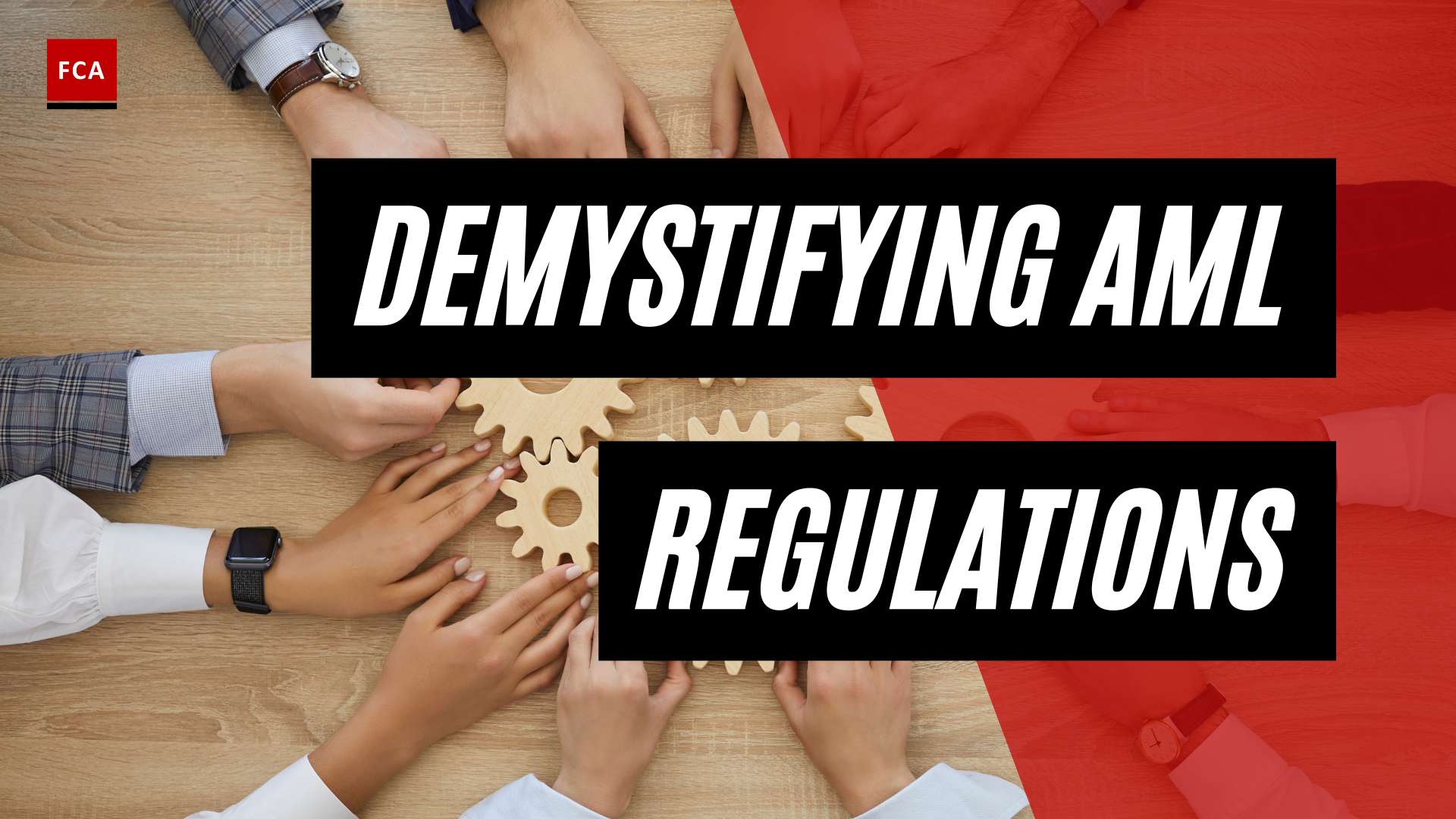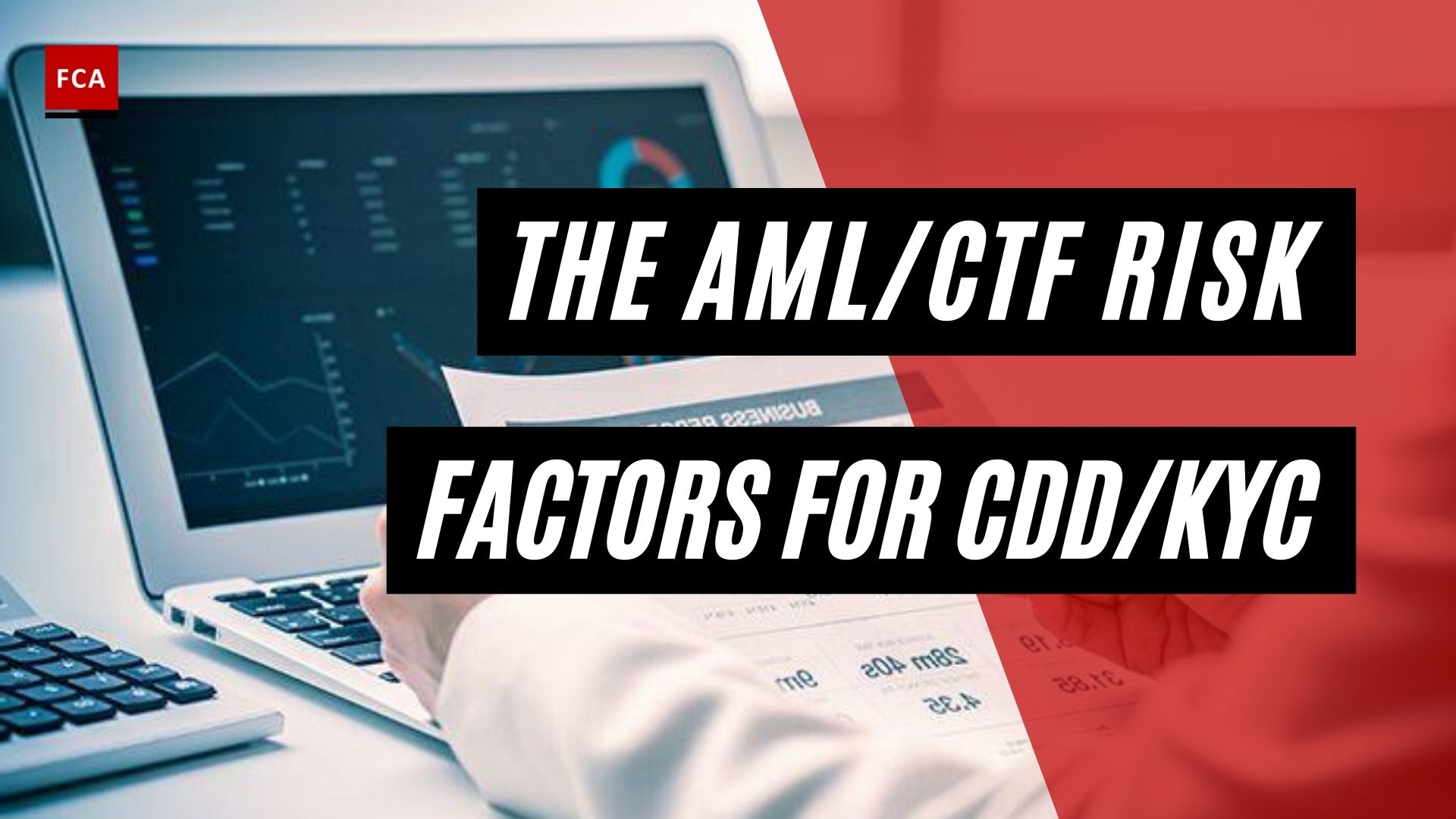Understanding Trade-Based Money Laundering
Trade-based money laundering (TBML) is a sophisticated method used by criminals to move illicit funds across borders and legitimize them through trade transactions. It involves exploiting the international trade system and transferring value between jurisdictions to facilitate illicit financial flows. TBML is estimated to account for between 2% and 5% of global money laundering, amounting to hundreds of billions of dollars annually (Acuity Knowledge Partners).
Introduction to Trade-Based Money Laundering
Trade-based money laundering is a complex and elusive form of money laundering. Criminals manipulate trade transactions to obscure the origin and movement of illicit funds. By integrating illicit proceeds into legitimate trade flows, they aim to make the funds appear legitimate. TBML is particularly attractive to criminals due to its potential to move large amounts of money with minimal scrutiny, given the vast number of transactions in global trade.
Scope and Impact of Trade-Based Money Laundering
The scope of trade-based money laundering is vast, with criminals exploiting various techniques to launder illicit funds. The primary money laundering typologies associated with TBML include over- and under-invoicing, multiple invoicing, over- and under-shipment, and falsely described goods. These typologies allow criminals to move illicit funds across borders and legitimize them through trade transactions (Public Safety Canada).
The impact of TBML is significant, both in terms of financial losses and the facilitation of other criminal activities. The U.S. Department of State estimates that the total value of global trade-based money laundering could range from $800 billion to $2 trillion annually (FICO). TBML not only undermines the integrity of the global financial system but also enables other illicit activities such as terrorist financing, drug trafficking, and proliferation of weapons (Acuity Knowledge Partners).
To effectively combat trade-based money laundering, it is crucial for authorities, financial institutions, and businesses involved in global trade to be vigilant and implement robust anti-money laundering controls. Understanding the typologies, challenges, and trends associated with TBML is essential to develop effective detection and prevention strategies. In the following sections, we will explore common typologies, challenges in detection, notable cases, and strategies for combating trade-based money laundering.
Common Typologies in Trade-Based Money Laundering
Trade-based money laundering (TBML) involves various tactics used to disguise the movement of illicit funds through legitimate trade transactions. Understanding the common typologies in TBML is crucial for detecting and preventing money laundering activities. Some of the common typologies include:
Over- and Under-Invoicing of Goods
Over- and under-invoicing of goods is a prevalent typology in TBML. In this scheme, the value of goods is manipulated on invoices to move money internationally while disguising the illicit nature of the funds. Criminals may overstate or understate the value of goods to overstate or understate the funds being transferred. This manipulation of invoice values helps facilitate the movement of illicit funds across borders (Acuity Knowledge Partners).
By inflating or deflating the value of goods, money launderers can transfer funds between parties while making it appear as legitimate trade transactions. This typology allows them to move illicit funds across borders and legitimize them through trade activities. It is important for financial institutions and authorities to be vigilant in identifying suspicious invoice patterns and anomalies that may indicate over- or under-invoicing.
Phantom Shipping and Fictitious Shipments
Phantom shipping and fictitious shipments are another common typology employed in TBML. Criminals create fictitious shipping transactions or manipulate shipping documentation to facilitate the movement of illicit funds across borders. Fictitious shipments involve the creation of false records for goods that do not actually exist or are not being transported. These transactions often utilize front and shell companies to further obscure the illicit nature of the funds (Acuity Knowledge Partners).
Phantom shipping and fictitious shipments enable money launderers to generate a paper trail that appears legitimate. By using fraudulent shipping documents, criminals can hide the illicit origin of funds and make them seem like genuine trade transactions. It is crucial for authorities and financial institutions to scrutinize shipping documentation and verify the authenticity of shipments to detect potential TBML activities.
Misuse of Free Trade Zones
Free trade zones (FTZs) are designated areas where goods can be stored, processed, and traded with relaxed customs regulations. These zones promote cross-border trade and economic activities. However, they can also be exploited for money laundering purposes. Criminals may misuse FTZs by conducting fraudulent trade transactions, such as falsely inflating the value of goods or using FTZs as transit points for illicit goods.
The misuse of FTZs allows money launderers to exploit the leniencies in customs controls and regulations. It provides an opportunity to manipulate trade transactions and obscure the origin of funds. Authorities and financial institutions need to closely monitor transactions involving FTZs and implement robust due diligence measures to detect and prevent potential TBML activities.
Understanding these typologies helps authorities, financial institutions, and compliance professionals recognize the red flags associated with TBML. By being aware of the tactics used by money launderers, stakeholders can enhance their detection capabilities and implement effective measures to combat TBML. For more information on trade-based money laundering, refer to our article on trade-based money laundering.
Challenges in Detecting Trade-Based Money Laundering
Detecting and combating trade-based money laundering poses significant challenges for authorities and financial institutions alike. The complex nature of global trade, the lack of oversight and regulatory resources, and the involvement of legitimate businesses all contribute to the difficulty in identifying and preventing this form of illicit activity.
Complexities of Global Trade
The intricate web of international trade creates an environment ripe for money laundering. The sheer volume of transactions, the involvement of multiple parties, and the complexity of trade documentation make it challenging to identify suspicious activities. Criminals exploit these complexities to disguise the movement of illicit funds, utilizing techniques such as over- and under-invoicing and phantom shipping to manipulate trade transactions (Acuity Knowledge Partners). The large number of legitimate transactions further complicates the task of distinguishing between legitimate trade and illicit financial flows.
Lack of Oversight and Regulatory Resources
Trade-based money laundering often thrives in jurisdictions with limited regulatory oversight and inadequate resources to combat financial crimes. Insufficient monitoring and enforcement mechanisms hinder the detection and prevention of illicit trade activities. Customs agencies and financial institutions may face challenges due to limited investigative capabilities and inadequate training (Public Safety Canada). The lack of specialized knowledge and expertise in identifying trade-based money laundering typologies can impede the effectiveness of anti-money laundering efforts.
Involvement of Legitimate Businesses
One of the notable challenges in detecting trade-based money laundering is the involvement of legitimate businesses. Criminals exploit the cover of legitimate trade activities to launder illicit funds. This involvement makes it difficult to differentiate between legitimate and illicit transactions. Shell companies and complex corporate structures are commonly employed to obfuscate the origin and ownership of funds, making it challenging for law enforcement agencies to trace illicit money flows (Public Safety Canada). The collaboration of criminals with legitimate businesses further complicates the detection and investigation process.
In order to effectively combat trade-based money laundering, collaboration between public and private sector entities is crucial. Sharing information, intelligence, and best practices can enhance the ability to detect and prevent these illicit activities. Strengthening anti-money laundering controls, employing advanced monitoring technologies, and training personnel to recognize trade-based money laundering indicators are essential steps in mitigating the risks associated with this sophisticated form of money laundering.
By addressing the complexities of global trade, increasing oversight and regulatory resources, and fostering collaboration, authorities and financial institutions can enhance their ability to detect and prevent trade-based money laundering. Continued efforts to raise awareness, improve regulatory frameworks, and enhance investigative capabilities are vital in the ongoing fight against this illicit financial activity.
Notable Cases of Trade-Based Money Laundering
Trade-based money laundering has been involved in several high-profile cases that have exposed the vulnerabilities within the global financial system. Understanding these cases provides insights into the techniques and consequences of such illicit activities. Here are some notable cases of trade-based money laundering:
Wachovia Bank Scandal
Wachovia Bank, now a part of Wells Fargo, was involved in one of the largest money-laundering events in history. Between 2004 and 2007, the bank allowed drug cartels in Mexico to launder approximately $390 billion through its branches. The bank facilitated the smuggling of U.S. dollars from drug sales in the U.S. across the Mexican border, which were then deposited into bank accounts in Mexico and eventually returned to the U.S. through the bank. In 2010, Wachovia paid a $160 million fine to avoid prosecution and committed to enhancing their Anti-Money Laundering (AML) procedures. This scandal highlighted the significant risks associated with money laundering in financial institutions and emphasized the importance of robust AML compliance programs in combating money laundering. (Sanction Scanner)
Standard Chartered Bank Violations
Standard Chartered Bank faced penalties of $670 million in 2012 for violating U.S. sanctions against Iran and working with Iranian entities. The bank was accused of breaking anti-money laundering controls and enabling the circumvention of U.S. regulations for $265 billion. Standard Chartered Bank also violated U.S. sanctions on other countries, including Burma, Libya, and Sudan. Despite facing penalties and fines, the bank continued to exhibit deficiencies in its AML controls, leading to further sanctions and criticism from regulatory bodies in both the U.K. and the U.S. (Sanction Scanner)
Danske Bank’s Estonian Branch Scandal
Danske Bank’s Estonian branch was involved in one of the biggest money laundering cases in history. Between 2007 and 2015, the branch served as a conduit for thousands of suspicious customers involved in illicit transactions totaling approximately $228 billion. The bank faced heavy scrutiny and fines amounting to $2 million by Danish authorities. This scandal highlighted the critical need for robust AML compliance programs within financial institutions to prevent money laundering effectively. It emphasized the importance of vigilance, transparency, and a strong commitment to AML compliance to deter illicit activities. (Sanction Scanner)
Nauru’s Transformation into a Tax Haven
Nauru, a small Pacific island nation, transformed into a tax haven in the 1990s due to a corrupt government. This transformation enabled Russian criminals to launder an estimated $70 billion through shell banks. Nauru’s lack of banking customer authentication and oversight facilitated the laundering of funds, leading to its designation by the U.S. Treasury as a money-laundering state in 2002. In response, Nauru implemented AML and tax haven laws with the assistance of the Financial Action Task Force by 2005. This case illustrates the repercussions of inadequate AML measures and the importance of regulatory compliance in combating money laundering. (Sanction Scanner)
Bank of Credit and Commerce International (BCCI) Scandal
The Bank of Credit and Commerce International (BCCI) faced allegations of engaging in fraud and money laundering activities totaling up to $23 billion. BCCI employed various sophisticated money laundering tactics, including shell companies, privacy havens, commissions, and bribery, to evade regulatory oversight. The bank’s operations were ultimately closed in 1991 by the Bank of England and other regulators. The BCCI scandal highlighted the imperative need for financial institutions to implement comprehensive AML compliance frameworks and robust AML compliance programs to prevent money laundering effectively and safeguard the integrity of the global financial system. (Sanction Scanner)
These notable cases serve as reminders of the importance of detecting and preventing trade-based money laundering. They demonstrate the need for increased collaboration between public and private sectors, enhanced AML controls, and constant monitoring to protect the integrity of global trade and financial systems.
Combating Trade-Based Money Laundering
To effectively combat trade-based money laundering (TBML), a collaborative approach between public and private sectors is crucial. This section highlights the importance of collaboration, enhancing anti-money laundering (AML) controls, and monitoring and detecting red flags in the fight against TBML.
Collaboration Between Public and Private Sectors
Collaboration between public and private sectors is essential in tackling the sophisticated and ever-evolving nature of TBML. Financial institutions, regulatory bodies, law enforcement agencies, and other stakeholders must work together to share information, intelligence, and best practices. By pooling their resources and expertise, these entities can enhance their ability to identify and disrupt TBML schemes.
Public-private partnerships can facilitate the exchange of information on emerging trade-based money laundering case studies, techniques, and typologies. These collaborations can also help in the development of effective policies, regulations, and guidelines to combat TBML. Building strong relationships and promoting open communication channels between the public and private sectors is vital in staying ahead of sophisticated money laundering operations.
Enhancing Anti-Money Laundering (AML) Controls
Financial institutions play a crucial role in preventing and detecting TBML. Enhancing AML controls is key to mitigating the risks associated with this illicit activity. Institutions need to implement robust AML programs that include comprehensive customer due diligence, transaction monitoring, and suspicious activity reporting.
To effectively combat TBML, financial institutions should monitor trade-based value transfer systems and closely scrutinize trade-related transactions. By implementing sophisticated data analytics and machine learning techniques, they can identify patterns and anomalies that may indicate potential TBML activities. Additionally, conducting enhanced due diligence on high-risk customers, jurisdictions, and industries can help institutions identify and prevent illicit financial flows.
Monitoring and Detecting Red Flags
Monitoring and detecting red flags is crucial in identifying potential TBML activities. Financial institutions should be vigilant in monitoring discrepancies in shipment values, volumes, and destinations. Unusual payment patterns, such as multiple payments for a single shipment or payments to high-risk jurisdictions, should also be closely scrutinized. By employing advanced transaction monitoring systems, institutions can detect suspicious trade activities and trigger investigations when necessary.
Training staff members to recognize trade-based money laundering indicators is essential for effective detection. This includes educating employees about the typologies and techniques used in TBML, as well as providing guidance on reporting suspicious activities. By fostering a culture of compliance and awareness, financial institutions can create a strong line of defense against TBML.
To stay ahead of evolving TBML trends, institutions should continuously update their monitoring systems and processes. Embracing new technologies and analytical tools can enhance the effectiveness of detection efforts. Moreover, staying informed about regulatory developments and industry best practices is crucial in adapting AML controls to the changing landscape of TBML.
In the battle against TBML, collaboration, enhanced AML controls, and proactive monitoring are vital. By working together and employing advanced detection methods, public and private sectors can reduce the prevalence of TBML, protect the integrity of global trade, and safeguard the financial system from illicit activities.
Future Challenges and Trends in Trade-Based Money Laundering
As the fight against trade-based money laundering (TBML) continues, there are several challenges and emerging trends that require attention and proactive measures. Understanding these challenges is essential for developing effective strategies to combat this illicit activity. In this section, we will explore the sophistication and complexity of TBML, the role of technological solutions and analytical tools, and the importance of regulatory measures and compliance efforts.
Sophistication and Complexity of TBML
TBML is considered one of the more sophisticated and complex methods of moving money illicitly across borders. Criminals exploit the international trade system and transfer value between jurisdictions to facilitate illicit financial flows (FICO). The vast number of transactions in global trade provides ample opportunities for criminals to disguise their illicit activities amidst legitimate trade.
To effectively combat TBML, financial institutions and regulatory bodies must continually adapt and enhance their detection capabilities. This includes developing advanced analytical models and algorithms that can identify patterns and anomalies in trade transactions. By leveraging artificial intelligence and machine learning technologies, organizations can better detect suspicious trade activities and uncover complex TBML schemes.
Technological Solutions and Analytical Tools
Technological advancements play a crucial role in combating TBML. Financial institutions and regulatory bodies are increasingly relying on sophisticated software solutions and analytical tools to identify and prevent trade-based money laundering activities. These tools enable organizations to analyze large volumes of trade data, detect potential red flags, and generate alerts for further investigation.
Advanced analytics can help identify discrepancies in shipment values, volumes, and destinations, as well as unusual payment patterns or high-risk jurisdictions involved in transactions. By monitoring these indicators, organizations can enhance their ability to identify potential TBML activities and take appropriate actions. For more information on trade-based money laundering indicators, refer to our article on trade-based money laundering indicators.
Regulatory Measures and Compliance Efforts
Regulatory measures and compliance efforts play a critical role in the fight against TBML. Governments and regulatory bodies are continuously updating and strengthening laws and regulations to address the evolving challenges posed by this illicit activity. Enhanced due diligence requirements, stricter know-your-customer (KYC) procedures, and improved reporting mechanisms are essential components of these efforts.
Financial institutions and businesses involved in international trade must stay abreast of regulatory changes and ensure compliance with anti-money laundering (AML) regulations. Implementing robust AML controls, conducting thorough risk assessments, and establishing effective internal monitoring systems are essential steps in mitigating the risk of TBML.
Collaboration between public and private sectors is also crucial in combating TBML. Sharing information and intelligence, conducting joint investigations, and fostering cooperation between financial institutions, law enforcement agencies, and regulatory bodies can significantly enhance the effectiveness of anti-money laundering efforts.
By addressing the challenges posed by the sophistication and complexity of TBML, leveraging technological solutions and analytical tools, and strengthening regulatory measures and compliance efforts, the fight against trade-based money laundering can make significant progress. Continued vigilance, adaptability, and collaboration among stakeholders will be key in effectively combatting this illicit activity and protecting the integrity of the global trade system.








